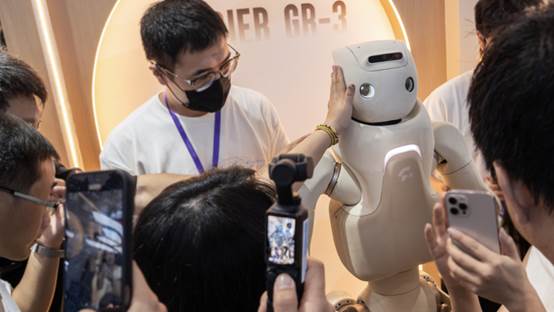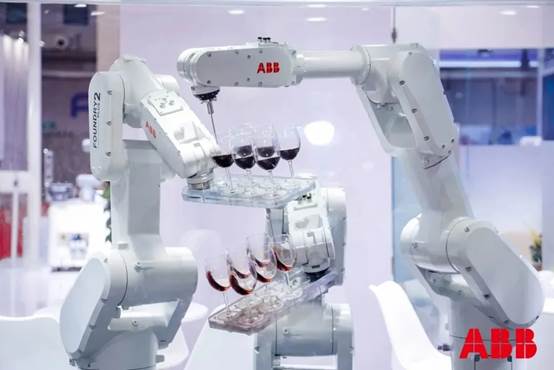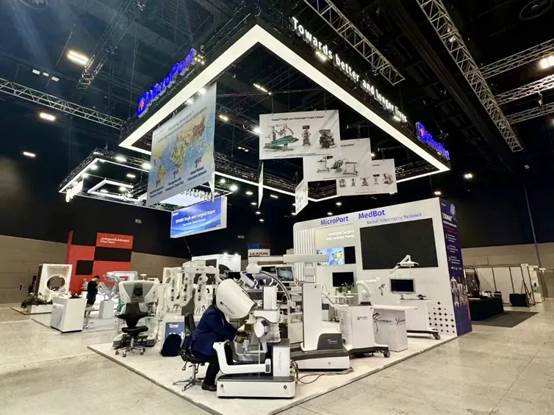Pudong robotics firms shine at 2025 WRC with debut of new products
In recent days, the 2025 World Robot Conference (WRC) has drawn global attention, gathering top robotics companies from China and abroad. Pudong-based Fourier unveiled its Care-bot GR-3 and an upgraded RehabHub™, impressing visitors with its emotional design and innovative technology.
ABB Robotics highlighted its latest autonomous multifunctional robots across three demonstration zones. Meanwhile, Pudong firms appeared at the 2025 World Artificial Intelligence Conference (WAIC) and the Society of Robotic Surgery (SRS) meeting, leveraging a supportive industrial ecosystem to accelerate product development and bring advanced robotics from the lab into practical, real-world applications.
Fourier GR-3 showcases "affectionate" human-robot interaction
Fourier presented the full-size Care-bot GR-3, a care-oriented humanoid companion with the tagline "Love, above all functionality", aiming to reshape human-robot interaction with warmth and serviceable intelligence for public environments.
The robot's soft-touch skin, friendly styling and full-sensory interaction system produced memorable demos where visitors freely touched, photographed and engaged with the machine, emphasizing approachable design alongside technical capabilities.

Fourier's full-sized humanoid robot Care-bot GR-3 attracts audiences at the 2025 WRC. [Photo/WeChat ID: pdnews]
Design details cited in the original Chinese text include Morandi warm tones, premium upholstery, and GFOAM soft padding; the original text reports the robot as 165 centimeters tall, with 55 joints.
GR-3's interaction stack combines auditory, visual and tactile modules with an attention-management mechanism and a dual-path response architecture to prioritize inputs and deliver timely, emotionally attuned reactions during live demonstrations.
Hardware highlights include a four-microphone array for sound-source localization, structured-light plus RGB cameras for facial tracking, 31 tactile sensors for touch detection and a micro-expression module for nuanced emotional cues.
Fourier defines two product tracks: Social Companion devices for public spaces and education, offering companionship for older adults and interactive presence for children, and Assistive Companion devices for professional care settings.
Assistive Companion use cases include mobility assistance, health monitoring, and rehabilitation training, with an explicit plan to deepen deployments in rehabilitation centers and eldercare institutions for clinical and supportive services.
ABB advances autonomous multifunctional robotics technology
ABB's exhibition area outlined its autonomous multifunctional robotics road map, including an OmniCore™ control cabinet paired with three IRB 1300 industrial robots completing a fragile-glass precision challenge at the show.
The demonstration emphasized path accuracy reportedly within 0.6 millimeters and movement speeds reaching 1,600 millimeters per second, showcasing next-generation motion control for fast, high-precision industrial tasks.
The "Follow me" AI application records the operator's tool movements and converts them into robot programs, enabling quick deployment of automated polishing without the complexity of traditional programming.
The PoWa collaborative robot demonstration highlighted flexibility across welding and material-handling tasks, combining industrial-level speed, strong collaboration performance, and compact, lightweight form factors suitable for SMEs and factories.

ABB robotic arms showcase high-precision, high-speed motion control. [Photo/WeChat ID: pdnews]
Henry Han, president of ABB Robotics Division in China, commented on China's vibrancy as an innovation hub and affirmed ABB's long-term localization strategy to support local manufacturing transformation and automation adoption.
ABB said it will expand autonomous multifunctional robot applications across the Chinese market via customized solutions, assisting enterprises in raising productivity and accelerating intelligent manufacturing upgrades.
ABB's Shanghai mega-factory and R&D center in Pudong entered operation in 2022; ABB indicates that over ninety percent of robots sold to Chinese customers are now produced locally at that facility.
MicroPort® MedBot™ leads innovation in global surgical robotics
At the 2025 SRS Annual Meeting, MicroPort® MedBot™ presented its most comprehensive product lineup ever, covering multi-port and single-port laparoscopic systems, remote surgical platforms, and orthopaedic and vascular intervention devices. At the event, the OneClick™ technology also made its international debut, further demonstrating MicroPort® MedBot™'s leadership in surgical robotics innovation.

MicroPort® MedBot™ showcases its most comprehensive product portfolio at the 2025 SRS Annual Meeting. [Photo/WeChat ID: pdnews]
The Toumai® single-port laparoscopic surgical robot achieves a qualitative leap in integration, intelligence, and minimal invasiveness, building on precision, efficiency, and convenience. It features world-first twin-C dexterous arms and multi-degree-of-freedom snake-like instruments.
This design ensures flexible operation in narrow surgical areas while enabling large-scale cross-quadrant procedures. The system realizes seamless "human-robot integration", enhancing the patient's treatment experience.
The Toumai® remote surgery system supports multiple remote communication networks, delivering high transmission speeds, low latency, and strong stability. It combines safety, effectiveness, reliability, and practical usability in surgical applications.
Test results show that inter-provincial remote surgeries have under 50 milliseconds of two-way latency. Even in extreme scenarios — cross-operator, cross-country, and cross-continent remote surgeries — the two-way latency remains under 150 milliseconds, meeting strict low-latency, high-precision, and safety requirements.
MicroPort® MedBot™ has established standardized robotic surgery training systems covering dozens of countries in Asia, Europe, the Americas, and Africa. It trains more than 2,000 professionals annually, supporting the safe and effective adoption of surgical robots.
The training network helps familiarize clinicians with China-made surgical robotics, promotes international collaboration, and builds confidence in advanced domestic medical technology across diverse healthcare systems.
